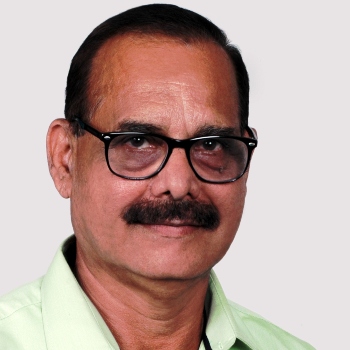Sutanu Guru
Book Review: Naveen@25, Perspectives
In a sane and sensible world, the so-called “national media” that operates in and around Delhi would have gone crazy doing saturation coverage of the milestone.

Last year, the chief minister of Odisha Naveen Patnaik completed 25 years in active politics. Later this year, he will beat the record set by Jyoti Basu of being the longest-serving chief minister of a major state. For a man who was often dismissed in his early days as an unexpected politician, Naveen Patnaik has turned political and electoral history on its head.
Back in 1997 when he suddenly plunged into politics after the death of his legendary father Biju Patnaik, critics and cynics described him as a socialite, a novice, a dilettante and a pawn offered by hard-nosed politicians who wanted to cash in on the legacy of Biju Patnaik.
All his critics, rivals, opponents, and even many who thought they could manipulate him have fallen by the wayside. The “national” media has not given attention to this phenomenon. The “liberals” have not eulogized him the way they do Lalu Yadav, Nitish Kumar, K. C. Rao, and Arvind Kejriwal. The fact is, unlike most other chief ministers, Naveen Patnaik doesn’t waste taxpayer money glorifying his cult through generous advertisements in newspapers and TV channels. That speaks a lot about the real state of the media industry in India. But this write-up is not about the media.
Veteran journalist Bhaskar Parichha has painstakingly edited a book titled Naveen@25-Perspectives that features contributions from a diverse and eclectic group of people to commemorate this important milestone. Contributors from various walks of life have written, analyzed, and attempted to unravel the mystery that is Naveen Patnaik. Lack of space doesn’t allow me to individually single out each contribution.
But the commentaries range from his life before politics as an author and scholar; his elite schooling and hobnobbing with royals and rock stars; his zero interest in anything to do with politics till his father died in 1997; his personal grace as a politician who never uses intemperate rhetoric against political rivals; his uncanny ability to be ruthless when it matters; his penchant for taking big risks like dumping the BJP as an ally before the 2009 elections; his mystical bond with voters of Odisha even though he struggles to speak fluently in the native language, and the manner in which he has completely transformed the state of Odisha since he first took oath as chief minister of the state in 2000.
I would reiterate: it is a shame political analysts, commentators, and pundits have ignored the phenomenon of Naveen Patnaik even as they give hysterical coverage to the likes of Arvind Kejriwal.

For this author, Naveen Patnaik would remain etched in the history of Odisha for transforming one of the poorest states of India into one that now aspires to be economically sound. When Naveen Patnaik became chief minister in 2000, Odisha and Bihar competed with each other to record the lowest per capita income. Their average was about one-fourth of India back then.
Today, the per capita income of Odisha is 95% of that of the national average. There is a consensus now that the per capita income of Odisha will soon surpass the national average. Bihar has been ruled by “susashan babu” Nitish Kumar in the same time period. The per capita income of Bihar is still one-third the national average.
The population of Bihar is about 125 million while that of Odisha is about 47.5 million. Yet, GST collections in Bihar in December 2022 were Rs 1309 crores while it was Rs 3854 crores in Odisha. There is no dearth of data to further prove this point. Forget data. I have done my schooling and early college in Odisha. When I travel there now, the sheer volume of anecdotal evidence that shows how the “starving” people of Kalahandi now have decent livelihoods is astonishing.
Many contributors have analyzed this dramatic change; though they could perhaps have done better with more reliable and recent data. The other feature of the Naveen Patnaik phenomenon, apart from economic transformation is his ability to be a “smiling assassin” of his political rivals; or those who thought they could control him.
For instance, his “mentor” and retired bureaucrat Pyari Mohan Mohapatra attempted a palace coup in 2012 when Naveen Patnaik was in London. That was the end of the distinguished career of Mohapatra. His political career since 1997 is littered with vanquished opponents who underestimated the iron and steel behind his genial smile and soft-spoken persona.
The book is clearly meant to celebrate a big milestone. So it would be foolish to expect contributions that criticize Naveen Patnaik. But some of the commentary does appear to be over the top. For instance, Sambeet Dash has compared Naveen Patnaik with Joe Biden, the President of the United States of America. Patnaik himself may not appreciate the analogy as Biden is a born politician unlike Naveen Patnaik and widely known as part of the corrupt old establishment in America.
Yet, the book is a valuable historical document of a politician largely ignored by the “national” media.
(Author has been a media professional for over 3 decades. He is now Executive Director, C Voter Foundation. Views are Personal)



























